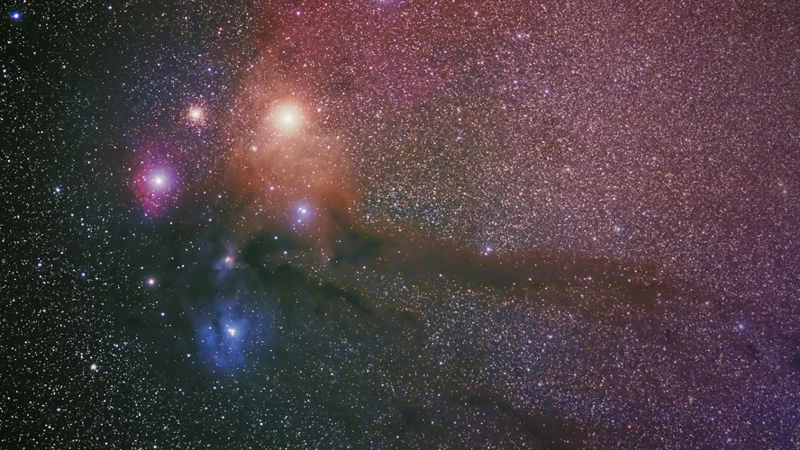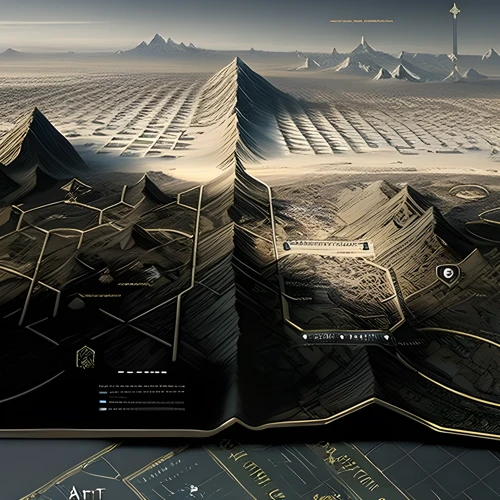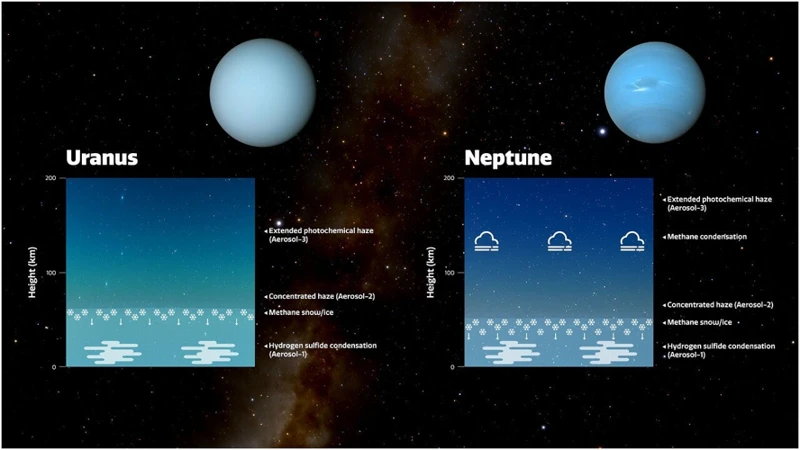The mysteries of Uranus have captivated scientists and space enthusiasts for centuries. This unconventional planet, with its unique characteristics and enigmatic nature, continues to intrigue researchers who seek to unravel its secrets. Throughout history, groundbreaking discoveries and technological advancements have paved the way for innovative space exploration, enabling scientists to redefine our understanding of planetary classification and gain insights into planetary evolution. In this article, we will delve into the mysteries of Uranus, explore the latest innovations in space exploration, and discuss the implications of these discoveries for astrobiology. Join us on this journey as we unveil the secrets of Uranus and glimpse into the future of this fascinating field of study.
Contents
- The Mysteries of Uranus
- Innovation in Space Exploration
- The Changing Landscape of Knowledge
- Unveiling Uranus’ Secrets
- The Future of Uranus Exploration
- Conclusion
-
Frequently Asked Questions
- 1. What makes Uranus an unconventional planet?
- 2. What are some historical discoveries about Uranus?
- 3. How has space exploration innovated the study of Uranus?
- 4. How has data analysis changed in the study of Uranus?
- 5. How does the study of Uranus contribute to planetary classification?
- 6. What does the study of Uranus reveal about planetary evolution?
- 7. How do the secrets of Uranus relate to astrobiology?
- 8. What methods are used to probe Uranus’ atmosphere and composition?
- 9. How do scientists study Uranus’ magnetic fields?
- 10. What can studying Uranus’ rings and moons tell us?
- References
-
Frequently Asked Questions
- 1. What makes Uranus an unconventional planet?
- 2. What are some historical discoveries related to Uranus?
- 3. How have new technologies and instruments revolutionized the exploration of Uranus?
- 4. How does data analysis contribute to unraveling the secrets of Uranus?
- 5. How has our understanding of planetary classification been redefined through studying Uranus?
- 6. What insights into planetary evolution have been gained through studying Uranus?
- 7. How do investigations into Uranus’ secrets impact the field of astrobiology?
- 8. What methods are used to probe Uranus’ atmosphere and composition?
- 9. How do scientists aim to understand Uranus’ magnetic fields?
- 10. What missions and projects are currently emerging in the exploration of Uranus?
- References
- Read More
The Mysteries of Uranus

Uranus, the seventh planet from the Sun, is shrouded in mystery and intrigue. Its unusual characteristics and behaviors baffle scientists around the world, leaving them perplexed and eager to uncover its secrets. With a tilted axis of rotation, Uranus experiences extreme seasons that defy expectations, with its northern and southern hemispheres alternating periods of darkness and light for decades. Its icy blue coloration, the result of methane in its atmosphere, adds to the planet’s enigmatic allure. Additionally, Uranus’ composition and internal structure remain largely unknown, presenting scientists with a puzzle that they can’t wait to solve. Despite centuries of study and observation, much about Uranus remains a mystery, making it a subject of ongoing fascination and curiosity. As researchers delve deeper into this strange and captivating planet’s mysteries, they hope to gain a deeper understanding of its origins, evolution, and place in our vast universe.
The Unconventional Planet
Uranus stands out among the planets of our solar system as a truly unconventional celestial body. One of its most distinctive features is its unique axial tilt. While most planets rotate on an axis perpendicular to their orbital plane, Uranus rotates on its side, leading to extreme seasons and peculiar day-night cycles. This tilt also gives Uranus its characteristic appearance, with its rings and moons rotating vertically rather than horizontally. In addition to its unusual rotation, Uranus is known for its icy blue complexion, an effect caused by the presence of methane in its atmosphere. This gives the planet its striking color, setting it apart from its neighboring planets in the solar system. Uranus has a highly dynamic atmosphere, with high-speed winds and intense storms, making it a fascinating subject of study. With its various quirks and unconventional behavior, Uranus continues to intrigue scientists and spark curiosity about the mysteries of our vast universe.
Historical Discoveries
Historical discoveries surrounding Uranus have played a crucial role in expanding our knowledge of this enigmatic planet. The discovery of Uranus itself in 1781 by astronomer William Herschel was a groundbreaking moment in the history of astronomy. Prior to this, Uranus was not known to ancient civilizations and was filed under the category of fixed stars. Herschel’s observation marked the first recorded instance of a planet being discovered beyond those known to ancient civilizations. Subsequent observations and analysis revealed the unique characteristics of Uranus, including its blue-green color and its distinct ring system. Another significant historical discovery related to Uranus was the detection of its magnetic field. In 1986, the spacecraft Voyager 2 passed by Uranus, providing valuable data about its magnetic field structure and revealing that it is tilted at an angle of about 59 degrees to its axis of rotation. These historical discoveries have paved the way for further exploration and investigation, fueling our curiosity and driving us to uncover more about the mysteries of Uranus.
Innovation in Space Exploration

In recent years, space exploration has witnessed remarkable innovations that have revolutionized our ability to study celestial bodies like Uranus. Advanced technologies and instruments have enabled scientists to peer deeper into the cosmos and gather unprecedented data. The development of advanced telescopes, such as the James Webb Space Telescope (JWST), has allowed for clearer and more detailed observations of Uranus and its surroundings. Cutting-edge spacecraft, such as the Cassini-Huygens mission and the upcoming Europa Clipper mission, have provided scientists with opportunities to study the outer planets and their moons in unprecedented detail. These advancements have not only expanded our understanding of Uranus but have also paved the way for future discoveries in space exploration. By harnessing innovative methods and tools, scientists can continue to unravel the mysteries of Uranus and unlock the secrets of our vast universe.
New Technologies and Instruments
New technologies and instruments have revolutionized the way we explore and study Uranus. Advancements in spacecraft design and instrumentation have allowed scientists to gather more precise and detailed data about this distant planet. For instance, the Voyager 2 spacecraft, which visited Uranus in 1986, provided valuable insights into its atmosphere, magnetic field, and rings. This mission paved the way for future missions and technological breakthroughs. In recent years, space agencies have been developing cutting-edge instruments specifically designed to unravel the secrets of Uranus. These instruments include high-resolution imaging cameras, spectrographs, and magnetometers, which capture images, analyze the composition of the atmosphere, and measure magnetic activity, respectively. Additionally, innovative propulsion systems, such as ion engines, have enabled spacecraft to travel vast distances and explore Uranus more efficiently. These advancements in technology and instrumentation continue to expand our knowledge and deepen our understanding of this mysterious planet.
Revolutionizing Data Analysis
Data analysis plays a crucial role in unlocking the secrets of Uranus and revolutionizing our understanding of the planet. With advancements in technology and computational power, scientists are now able to process and analyze vast amounts of data collected from space missions and telescopic observations. This data includes measurements of Uranus’ atmosphere, magnetic fields, and composition, among other attributes. Through sophisticated algorithms and modeling techniques, researchers are able to extract valuable insights and patterns from these datasets. This revolution in data analysis allows scientists to uncover hidden relationships, identify atmospheric phenomena, and explore the complex dynamics of Uranus’ interior. By examining the composition and characteristics of the planet in greater detail, scientists can gain a deeper understanding of its formation and evolution. This knowledge not only contributes to our understanding of Uranus but also has broader implications for planetary science and astrobiology. The groundbreaking advancements in data analysis are propelling our understanding of Uranus forward and opening up new avenues of exploration and discovery in the realm of planetary research.
Exploring New Frontiers
Exploring new frontiers in space exploration is essential to uncovering the secrets of Uranus and expanding our knowledge of the cosmos. Scientists and engineers are constantly pushing the boundaries of technology and innovation to develop new instruments and methods for studying the planet. One exciting area of exploration is the development of advanced spacecraft and probes equipped with sophisticated sensors and imaging systems, allowing for high-resolution observations of Uranus. These missions provide valuable data on the planet’s atmosphere, composition, and magnetic fields, shedding light on its unique properties. Additionally, novel missions like the James Webb Space Telescope, set to launch in the near future, will enhance our understanding of Uranus by capturing detailed images and gathering valuable spectroscopic data, providing unprecedented insights into the planet’s evolution and dynamics. By embracing these new frontiers, scientists are poised to unravel the mysteries of Uranus and revolutionize our understanding of the outer reaches of our solar system.
The Changing Landscape of Knowledge

The landscape of knowledge regarding Uranus has undergone significant transformations over the years. As advancements in technology and scientific understanding continue to progress, our perception of this distant planet has evolved, leading to a redefinition of planetary classification. With the discovery of numerous exoplanets and the development of sophisticated instruments and telescopes, scientists have gained new insights into the composition, formation, and dynamics of Uranus. This growing body of knowledge has not only expanded our understanding of planetary evolution but also has implications for the field of astrobiology. By studying Uranus and its unique characteristics, scientists hope to uncover clues about the potential for life beyond Earth and the conditions necessary for its existence. This ever-changing landscape of knowledge surrounding Uranus is a testament to the human desire to unravel the mysteries of the universe and expand our understanding of the cosmic forces that shape our existence.
Redefining Planetary Classification
One of the most significant contributions of studying Uranus is the major impact it has had on redefining planetary classification. Prior to the exploration of Uranus, the traditional understanding of planets was based on the four inner rocky planets (Mercury, Venus, Earth, and Mars) and the four outer gas giants (Jupiter, Saturn, Uranus, and Neptune). However, Uranus presented a unique challenge to this conventional classification system.
Uranus, with its tilted axis and icy composition, did not fit neatly into either category. Its striking differences led scientists to question the traditional definitions of planets and sparked a debate that led to a reevaluation of how we categorize celestial bodies in our solar system.
This prompted astronomers to propose a new category called “ice giants,” which included Uranus and Neptune. Unlike the gas giants, the ice giants are primarily composed of water, ammonia, and methane. This classification recognized the distinct characteristics of Uranus and paved the way for a more accurate understanding of planetary diversity.
The redefining of planetary classification has not only affected our understanding of Uranus but also has implications for exoplanet research. By reconsidering the traditional definitions, scientists have been able to explore and classify exoplanets with diverse compositions and environmental conditions. This reevaluation of planetary classification is crucial for categorizing and studying the wide range of celestial objects we encounter in our ever-expanding universe.
Insights into Planetary Evolution
Insights into Planetary Evolution:
Studying the evolution of planets is crucial for understanding the origins and development of our own solar system, as well as others in the universe. Uranus, with its unique characteristics and composition, provides valuable insights into the processes that shape planetary evolution. By analyzing its atmosphere, internal structure, and geological features, scientists can gain a deeper understanding of the forces at work during the formation and evolution of planets. The presence of methane in Uranus’ atmosphere, for example, suggests that the planet experienced a different history compared to its gas giant counterparts, such as Jupiter and Saturn. The study of Uranus also sheds light on the role of collisions and gravitational interactions in the evolution of planetary systems. By examining its moons and rings, scientists can glean information about the dynamic interactions between celestial bodies, including the formation of moons through impacts or capture. Studying Uranus’ magnetic field provides clues about the planet’s internal dynamics and the interplay between the atmosphere and the planet’s core. These insights into planetary evolution not only advance our knowledge of Uranus but also contribute to our broader understanding of how planets form and change over time.
Implications for Astrobiology
Astrobilogy, the study of life beyond Earth, is a field that is greatly influenced by our understanding of other planets and their environments. The exploration and discoveries surrounding Uranus have significant implications for astrobiology. By analyzing the composition and properties of Uranus, scientists can gain insights into the conditions that may support life on other celestial bodies. The study of Uranus’ atmosphere can provide valuable information about the potential presence of organic molecules, which are essential building blocks for life as we know it. Additionally, studying Uranus’ moons and their interactions with the planet’s magnetic field can provide clues about the potential for habitable environments and the possibilities of extraterrestrial life. The knowledge gained from studying Uranus can inform future space missions and guide scientists in their search for life beyond our own planet. As astrobiologists continue to unravel the secrets of Uranus, their findings may have far-reaching implications for our understanding of the universe and the potential for life elsewhere.
Unveiling Uranus’ Secrets

Unveiling the secrets of Uranus requires extensive exploration and scientific investigation. One of the key areas of focus is the planet’s atmosphere and composition. Scientists use advanced instruments and spacecraft to analyze the gases and particles present in Uranus’ atmosphere, studying its molecular makeup and variations in temperature. By studying the atmospheric conditions, researchers hope to gain insights into the planet’s climate patterns, as well as the processes that drive its unique features, such as the formation of its striking blue-green clouds. Another aspect of unraveling Uranus’ secrets is understanding its magnetic fields. These powerful and complex fields play a crucial role in shaping the planet’s environment and interaction with its surroundings. By studying the magnetic fields, scientists can gain knowledge about the planet’s interior structure and dynamics, providing clues about its formation and evolution. Additionally, exploring the rings and moons of Uranus can offer valuable insights into the interactions between the planet and its surrounding celestial bodies. These moons, with their diverse features and behaviors, provide astronomers with a wealth of information about the history and composition of Uranus itself. As researchers delve deeper into these areas of study and uncover more information, we are inching closer to truly understanding the enigmatic secrets of Uranus.
Probing the Atmosphere and Composition
Probing the atmosphere and composition of Uranus is a challenging endeavor due to the planet’s distance from Earth and the limited number of dedicated missions. However, scientists have made significant progress in understanding this aspect of Uranus through a combination of observations and data analysis. One key area of focus has been studying the planet’s atmosphere, which consists primarily of hydrogen, helium, and traces of methane. By using spectroscopic techniques, researchers have been able to analyze the absorption and emission of light to determine the composition and temperature profiles of Uranus’ atmosphere. This information has revealed fascinating details about the planet’s weather patterns, including the presence of powerful winds that can reach speeds of up to 900 kilometers per hour. Additionally, scientists have also gathered insights into the abundance of methane in the atmosphere, which contributes to Uranus’ distinct blue coloration. This understanding of Uranus’ atmosphere and composition has been instrumental in building accurate models and simulations to further explore the planet’s mysteries. While there is still much to learn, the ongoing efforts to probe Uranus’ atmosphere and composition bring us closer to unraveling the secrets of this captivating planet and expanding our knowledge of the outer reaches of our solar system.
Understanding Magnetic Fields
Understanding the magnetic fields of Uranus is a crucial aspect of unraveling the mysteries surrounding this distant planet. Unlike most planets in our solar system, Uranus has an incredibly tilted magnetic field, which is tilted at an angle of 59 degrees relative to its axis of rotation. This peculiar alignment creates a highly dynamic and complex magnetosphere. Scientists believe that the unusual tilt of Uranus’ magnetic field could be attributed to a number of factors, including its unique rotation and internal dynamics. Earth’s magnetic field is generated by the motion of molten iron in its outer core, but Uranus likely has a different mechanism at play due to its icy composition. The interaction between Uranus’ magnetic field and its surrounding environment, including the solar wind, moons, and rings, is of particular interest to researchers studying the planet. By studying the properties and behavior of Uranus’ magnetic field, scientists hope to gain insights into the planet’s interior structure, its processes of magnetic field generation, and the interactions between its magnetic field and the larger solar system.
Exploring the Rings and Moons
When it comes to exploring Uranus, the rings and moons surrounding the planet are an area of particular interest and intrigue. Like Saturn, Uranus is also known to have a system of rings, although they are much darker and less prominent. These rings are composed of dark particles, including dust and ice, which create a captivating and mysterious phenomenon. Scientists are continually studying these rings to understand their formation and dynamics, as well as their relationship to the planet itself.
Uranus is also accompanied by a retinue of 27 known moons, each with its own unique characteristics and behavior. The largest moons of Uranus, such as Titania and Oberon, resemble miniature worlds in their own right, with diverse terrains and geological features. These moons provide valuable insights into the history and evolution of the Uranian system, as well as clues about the formation of moons in general within our solar system. They also serve as potential targets for future exploration and research, as missions like the Voyager spacecraft have only provided limited data thus far.
One particular moon of interest is Miranda, a moon with a highly varied and puzzling surface. Its surface features include tall cliffs, known as coronae, as well as smooth plains and valleys. These unusual formations have led scientists to believe that Miranda may have experienced significant geological activity in its past. Studying the composition and geology of Miranda’s surface can provide valuable insights into the history and composition of Uranus itself.
Exploring the rings and moons of Uranus requires the use of advanced imaging and remote sensing techniques. By capturing detailed images of these celestial objects, scientists can analyze their composition, study their orbital dynamics, and gain a deeper understanding of their origins and evolution. These investigations not only contribute to our understanding of Uranus but also shed light on the formation and dynamics of other ring systems and moons within our solar system.
As technology continues to advance, future missions and spacecraft will be equipped with even more sophisticated instruments and imaging capabilities, allowing for an even more detailed exploration of Uranus’ rings and moons. By unraveling the mysteries of these captivating features, scientists hope to gain a deeper understanding of the broader processes that shape our solar system and the celestial bodies within it.
The Future of Uranus Exploration

The future of Uranus exploration holds great promise as advancements in technology and scientific understanding pave the way for new missions and discoveries. Space agencies and private companies are actively developing plans for future missions that will further unravel the secrets of this mysterious planet. These missions will leverage cutting-edge technologies and instruments to probe Uranus’ atmosphere, study its magnetic fields, and explore its rings and moons. The data collected will provide valuable insights into the planet’s formation and evolution, as well as its potential for supporting life. With each new mission, scientists are hopeful that they will be able to unlock additional pieces of the puzzle, bringing us closer to a more comprehensive understanding of Uranus and the fascinating mysteries it holds within.
Emerging Missions and Projects
- One of the exciting aspects of studying Uranus is the emergence of new missions and projects dedicated to exploring this enigmatic planet. These endeavors aim to shed light on its mysteries and uncover groundbreaking discoveries.
- One such mission is the proposed Uranus Pathfinder, a spacecraft designed to orbit Uranus and gather detailed data about its atmosphere, composition, and magnetic fields. This ambitious project would provide invaluable insights into the planet’s complex dynamics and help scientists better understand its formation and evolution.
- Another upcoming mission is the Uranus Odyssey, which plans to send a probe directly into Uranus’ atmosphere. This daring mission would allow scientists to conduct in-depth analysis of the planet’s composition, providing crucial information about its atmospheric conditions and potential for habitability.
- Collaborative efforts between space agencies, such as NASA and the European Space Agency (ESA), are also underway to explore the possibility of joint missions to Uranus. These partnerships aim to combine expertise and resources in order to maximize scientific discoveries and advancements in our understanding of this mysterious planet.
- With these emerging missions and projects, scientists and researchers are poised to uncover unprecedented insights into Uranus and its secrets. The data collected from these missions will not only deepen our knowledge of this distant planet but also contribute to our broader understanding of the formation and evolution of planetary systems across the universe.
Potential Discoveries and Breakthroughs
Potential discoveries and breakthroughs in the exploration of Uranus hold immense excitement and possibility. As technology continues to advance, scientists are optimistic about uncovering new insights into the planet’s mysteries. One area of interest is the hunt for undiscovered moons or rings around Uranus. By examining gravitational disturbances or analyzing data from past spacecraft missions, astronomers hope to identify previously unknown satellites or rings encircling the planet. These discoveries could offer valuable information about the planet’s formation and evolution, shedding light on its complex dynamics. Future missions to Uranus may provide opportunities to directly study the planet’s atmosphere and composition in greater detail. By deploying advanced instruments and spacecraft, scientists can collect higher-resolution data on the planet’s atmospheric properties, gaseous composition, and potential organic compounds. This knowledge could revolutionize our understanding of planetary atmospheres and unveil new possibilities for astrobiology. Additionally, the exploration of Uranus presents a unique opportunity to study its intricate magnetic field. By studying the planet’s magnetosphere and its interactions with the solar wind, researchers can gain valuable insights into the dynamics of magnetic fields and their role in planetary systems. Unlocking the secrets of Uranus’ magnetic field could contribute to our understanding of Earth’s magnetic field and its impact on our planet’s climate and habitability. As researchers continue to push the boundaries of exploration, the potential for unexpected discoveries or breakthroughs in understanding Uranus grows. With every mission and technological advancement, we inch closer to unraveling the secrets that this enigmatic planet holds, opening up a world of knowledge and expanding our understanding of the universe.
Conclusion

In conclusion, the exploration of Uranus has been a journey filled with innovation, discoveries, and a deepening understanding of our vast universe. Through the use of new technologies and instruments, scientists have revolutionized our ability to study distant planets and gather valuable data. The changing landscape of knowledge has led to a redefinition of planetary classification, allowing us to better comprehend the diversity of celestial bodies in our solar system and beyond. Insights into planetary evolution gained from studying Uranus have far-reaching implications for astrobiology, offering valuable clues about the potential for life in other parts of the universe. As we continue to probe the atmosphere and composition of Uranus, understand its magnetic fields, and explore its rings and moons, we inch closer to unraveling the secrets of this enigmatic planet. The future of Uranus exploration looks promising, with emerging missions and projects aiming to uncover even more mysteries. With each endeavor, the potential for groundbreaking discoveries and breakthroughs grows, pushing the boundaries of our knowledge further. The journey to unravel Uranus’ secrets is far from over, and as we continue to explore, we will undoubtedly encounter surprises and revelations that will shape our understanding of the cosmos. So let us embrace the unknown, venture into the depths of space, and unlock the mysteries that Uranus holds, for they may offer unimaginable insights into the wonders of our universe.
Frequently Asked Questions

1. What makes Uranus an unconventional planet?
Uranus is considered unconventional due to its unique characteristics. It has an extreme tilt, causing it to rotate on its side, unlike any other planet. This gives rise to long seasons lasting for decades and creates unusual patterns of light and darkness on its hemispheres.
2. What are some historical discoveries about Uranus?
In 1781, Uranus was discovered by William Herschel, marking the first discovery of a planet beyond Saturn. Subsequent observations revealed its rings and numerous moons. Voyager 2’s flyby in 1986 provided valuable insights into its composition and atmosphere.
3. How has space exploration innovated the study of Uranus?
Advancements in space exploration have revolutionized our understanding of Uranus. New technologies and instruments, such as high-power telescopes and space probes, have allowed for more detailed observations and data collection, enabling scientists to analyze and explore the planet in unprecedented ways.
4. How has data analysis changed in the study of Uranus?
Data analysis techniques have greatly advanced, allowing scientists to make sense of the vast amounts of information collected from Uranus. Automation, machine learning, and sophisticated algorithms now aid in deciphering complex patterns, identifying trends, and extracting valuable insights from the data.
5. How does the study of Uranus contribute to planetary classification?
The study of Uranus challenges traditional planetary classification. Its unique characteristics have prompted scientists to redefine our understanding of gas giants and their underlying mechanisms. By studying Uranus, researchers gain valuable insights into the diversity and complexity of planets in our solar system and beyond.
6. What does the study of Uranus reveal about planetary evolution?
Uranus provides valuable information about the processes and dynamics involved in planetary evolution. By analyzing its composition, structure, and geological features, scientists can infer the formation and evolution of not only Uranus but also other gas giants and terrestrial planets.
7. How do the secrets of Uranus relate to astrobiology?
Astrobiology, the study of life beyond Earth, is greatly influenced by the secrets of Uranus. Understanding the planet’s atmosphere, composition, and potential for habitability expands our knowledge of environments where life could exist. Uranus serves as a stepping stone in our search for extraterrestrial life.
8. What methods are used to probe Uranus’ atmosphere and composition?
Various methods are employed to study Uranus’ atmosphere and composition. Spectroscopy, remote sensing, and space probes allow scientists to analyze the planet’s gases, trace elements, and atmospheric conditions. These methods help uncover the secrets hidden within Uranus’ atmospheric layers.
9. How do scientists study Uranus’ magnetic fields?
Scientists study Uranus’ magnetic fields through observations and measurements taken by spacecraft and telescopes. Mapping the planet’s magnetic field provides insights into its internal structure, processes, and interactions with its environment, shedding light on the mysteries surrounding Uranus.
10. What can studying Uranus’ rings and moons tell us?
Studying Uranus’ rings and moons provides valuable information about the planet’s past interactions and its evolution. By examining the composition, structure, and dynamics of these celestial bodies, scientists can unravel the history and potential future of Uranus and its surrounding space.
References
- Unraveling The Cosmic Secrets Of Each Zodiac Sign
- Uranus’s Infrared Auroras: A Cosmic Symphony Unveiling …
- Exploring the Mysteries of Planet Uranus: The UOP Mission
Frequently Asked Questions

1. What makes Uranus an unconventional planet?
Uranus stands out among the planets in our solar system due to its unique characteristics. It is known as an “ice giant,” consisting primarily of hydrogen and helium gases, as well as frozen substances like water, ammonia, and methane. It also rotates on its side, earning it the nickname “the sideways planet.”
In 1781, William Herschel discovered Uranus, marking the first time a new planet had been found since ancient times. Later observations revealed the presence of rings around Uranus, making it the first planet aside from Saturn known to possess such a feature. Various expeditions and missions have provided valuable insights into its composition and atmosphere.
3. How have new technologies and instruments revolutionized the exploration of Uranus?
Advancements in technology have significantly enhanced our understanding of Uranus. Modern telescopes and space probes equipped with advanced imaging systems and spectroscopy instruments have allowed scientists to study the planet’s atmosphere, composition, and magnetic field in great detail. These innovative tools have enabled groundbreaking discoveries and improved our understanding of this enigmatic planet.
4. How does data analysis contribute to unraveling the secrets of Uranus?
Data analysis plays a crucial role in interpreting the vast amount of information collected from missions to Uranus. By analyzing the spectroscopic data obtained from spacecraft and telescopes, scientists can determine the planet’s atmospheric composition, identify trace elements, and study atmospheric phenomena. This analytical approach helps us uncover the mysteries of Uranus and gain insights into its complex nature.
5. How has our understanding of planetary classification been redefined through studying Uranus?
Studying Uranus has challenged and expanded our understanding of planetary classification. Its unique composition, atmospheric characteristics, and tilting rotation have led scientists to rethink the traditional categorization of planets. This has helped pave the way for the inclusion of categories like “ice giants,” allowing us to better comprehend the diversity of planetary systems within our universe.
6. What insights into planetary evolution have been gained through studying Uranus?
Uranus provides valuable insights into the processes of planetary formation and evolution. By studying its composition and structure, scientists can infer the conditions that prevailed during the early stages of our solar system’s development. Understanding Uranus’ evolution contributes to our overall knowledge of how planets form, how they change over time, and how they interact with their surrounding environment.
7. How do investigations into Uranus’ secrets impact the field of astrobiology?
The study of Uranus has implications for astrobiology, the branch of science that explores the potential for life beyond Earth. The investigation of the planet’s atmosphere, its chemical makeup, and the presence of organic compounds provides valuable data for understanding the prerequisites necessary for life to emerge and thrive. This knowledge helps inform our search for habitable environments within our solar system and beyond.
8. What methods are used to probe Uranus’ atmosphere and composition?
Various methods are employed to probe Uranus’ atmosphere and composition. Spacecraft missions like Voyager 2 and the proposed Uranus Orbiter and Probe have conducted flybys and gathered data on the planet’s atmospheric conditions. Additionally, ground-based telescopes equipped with specialized instruments, such as spectrometers and adaptive optics, allow scientists to analyze the light reflected by Uranus and extract valuable information about its atmospheric constituents.
9. How do scientists aim to understand Uranus’ magnetic fields?
To understand Uranus’ magnetic fields, scientists rely on data collected by spacecraft and ground-based observatories. By studying the planet’s magnetic field interactions with its moons and rings, scientists can gain insights into its structure, strength, and dynamics. These investigations help us better comprehend the formation and evolution of magnetic fields in both Uranus and other celestial bodies.
10. What missions and projects are currently emerging in the exploration of Uranus?
Several missions and projects are currently in the planning stages to further explore Uranus. These include proposals for orbiters and probes that would provide more detailed observations of the planet’s atmosphere, magnetosphere, and rings. Additionally, advancements in space technology and international collaborations hold the promise of future expeditions that will delve deeper into the mysteries of Uranus and unlock its secrets.







